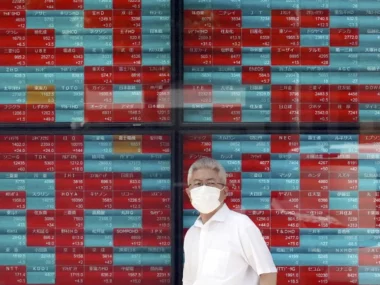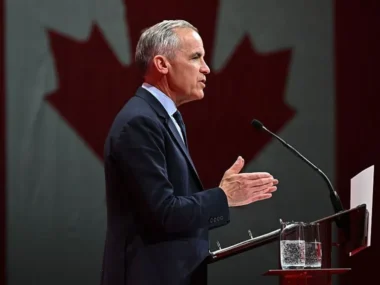While inflation has dropped substantially since peaking at over 9% in June 2022, many are still feeling the strain of rising prices.
Last month, inflation in the United States was higher than projected, although continuing to fall from its highest levels in a generation.
Official data show that price growth fell to 3.1% annually in January, exceeding economists’ predictions of 2.9%. In December, the consumer price index was at 3.4%.
The most recent official data triggered a pre-market sell-off on Wall Street before New York opened for business on Tuesday. Stock markets have reached new highs in recent weeks as investors gained confidence in the lowering of inflation and some of the United States’ major firms reported strong profits.
While inflation has declined substantially since peaking at more than 9% in June 2022, many Americans continue to feel the pain. Joe Biden, who is running for reelection in November, must convince them that the economy is working for them.
On a monthly basis, the consumer price index increased by 0.3% in January, up from 0.2% the previous month and beyond the 0.2% forecast.
The so-called “core” index, which excludes volatile food and energy costs, is carefully studied since it gives a better idea of inflation’s trend. It also increased month over month, rising from 0.3% to 0.4%.
According to the US Bureau of Labor Statistics, which produces the statistics monthly, the rising cost of shelter, including rent, motor vehicle insurance, and medical care, pushed the index higher in January.
The US economy has stayed healthy in recent years, adding millions of jobs and defying recession fears, even as the Federal Reserve has launched an aggressive drive to combat inflation. Last month alone, employers added 353,000 positions.
Many Americans are not optimistic about the economy as they deal with their own financial reality. A carefully monitored survey by the University of Michigan, however, showed a surge in consumer optimism last month, with sentiment reaching its best level since July 2021.
Now that annual inflation is returning to 2%, Fed policymakers are poised to lower interest rates for the first time in four years. Wall Street is predicting that it will begin doing so as early as May, after Fed Chairman Jerome Powell indicated that a decrease was unlikely next month.
According to Paul Ashworth, chief North America economist at Capital Economics, January’s surprisingly strong number will strengthen the notion in certain quarters that the “last mile is the hardest” as inflation returns to normal.
Last month, prices in major categories such as clothes and medical care items fell. “There is still plenty of disinflation in the economy,” Ashworth stated.











